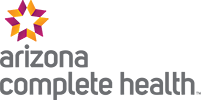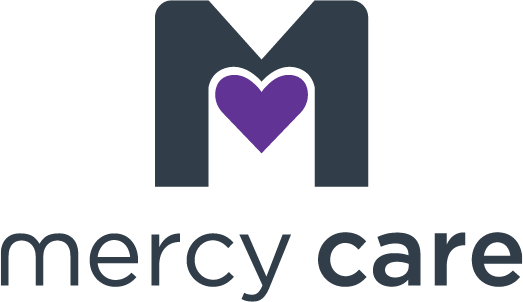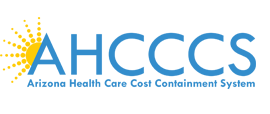
The Partnership at Drugfree.org CEO Steve Pasierb Responds
The University of Michigan’s Monitoring the Future Study (MTF) – an annual survey on teen drug abuse tracking 8th, 10th and 12th graders – shows a multi-year surge in childhood marijuana use among the nation’s school-aged children. This escalating trend, especially when combined with a significant drop in the perceptions of risk that adolescents (notably 12-13 year olds) associate with marijuana use, is alarming.
The 2012 survey of approximately 45,000 youth ages 13-18 underscores that we need to pay close attention to childhood marijuana use. Marijuana use among kids escalates after eighth grade and MTF found that more than 11 percent of the youngest children surveyed (13-14 year olds) report they used marijuana in the past year.
The study showed that by the time kids become high school seniors, those numbers increase drastically, with more than one in five (23 percent) saying they smoked marijuana in the past month and over one-third of kids (36 percent) reporting they smoked it within the previous year.
"Yet another year of increases in childhood marijuana use is deeply disturbing as these can spell real trouble for young kids later on,” said Pasierb. “Heavy use of marijuana – particularly beginning in adolescence – brings the risk of serious problems and our own data have shown it can lead to involvement with alcohol and other drugs as well. Kids who begin using drugs or alcohol as teenagers are more likely to struggle with substance use disorders when compared to those who start using later in life. This is of particular concern because we know that 90 percent of addictions have roots in the teenage years.”[1]
The new data also showed that children’s perception of marijuana’s harmfulness is down dramatically, and among older kids, those erosions in anti-marijuana attitudes are now at the absolute lowest levels they have been since the late 1970’s, when MTF began tracking the trend. Research has consistently shown that the less risky a child believes a drug to be, the more likely he is to use it.
· Less than half, only 41.7 percent, of 13-14 year olds see occasional use of marijuana as harmful.
· As they get older, kids’ perception of risk in using marijuana continues to diminish. Only one in five 12th graders, 20.6 percent, see occasional marijuana use as harmful, and 44.1 percent see regular use as harmful, the lowest level since 1979.
“The considerable decline among kids who say they see risk in using marijuana has been a determining factor in the subsequent increases in use we are seeing now. The fact that kids’ perceived risk of marijuana use continues to fall portends a further increase in children using it. We are on our way to a whole generation of kids who could potentially start using marijuana because they simply don’t think it has any risk,” said Pasierb. “That’s why parents need to understand that marijuana isn’t an abstract idea, but a real part of their children’s environment. We need to engage our kids and talk with them about the dangers of children using marijuana.”
On Legalization of Marijuana
“The Partnership at Drugfree.org does not support legalized marijuana. Legalization of marijuana does not change the reality that use of marijuana, alcohol or any drug in adolescence poses risks to teen brain development and significantly increases the likelihood of progression to addiction.
What legalization may well increase is the availability of marijuana to teens – and the kind of aggressive marketing to underage users that alcohol and tobacco companies have consistently engaged in – to the clear detriment of young people’s health and well-being.
In the interest of protecting kids, and based on the perspective of parents, we believe that adding marijuana to the menu of legally available substances and marketed products will make it more likely that kids will use it. The need for education, prevention and guidance toward effective treatment increases dramatically with legalized marijuana. Our role in motivating and equipping parents to prevent or get help with a child’s involvement with drugs does not diminish, but instead becomes all the more important,” said Pasierb.
Beyond Marijuana: Mixed Results in Abuse of Prescription Drugs
The Monitoring the Future Survey found that among older kids in their senior year in high school, past-year abuse of the stimulant Adderall, often prescribed to treat ADHD, has increased over the past few years to 7.6 percent, up from 5.4 percent in 2009. Accompanying this increased use is a decrease in the perceived harm associated with using the drug, which dropped nearly 6 percent in the past year – only 35 percent of 17-18 year olds believe that using Adderall occasionally is risky.
Abuse of over-the-counter (OTC) cough and cold medicine containing the active ingredient dextromethorphan (DXM) is at 5.6 percent among high school seniors, and has remained at a relatively steady rate over the past five years. MTF continues to show that most teens are getting these medicines from family members and friends.
Drug overdoses have now surpassed car crashes as the leading cause of accidental death in the United States and this increasing trend is being driven by painkillers.[2] Emergency department visits involving the misuse or abuse of pharmaceuticals has more than doubled between 2004 and 2010. [3]
“Americans drastically underestimate the negative impact that the abuse of Rx drugs and OTC cough medicine is having on teens today,” said Pasierb. “Unfortunately, medicine abuse continues to threaten the health and well-being of our kids. From the easy accessibility that teens have to medicines in their own homes, coupled with a low perception of risk in abusing them – to parents giving their own kids medicines that are not prescribed to them – we must all take action to turn the tide on this epidemic. Our children’s lives depend on it.”
The Medicine Abuse Project Aims to Curb Growing Epidemic Among Teens
With the ultimate goal of preventing 500,000 teens from abusing medicine within five years, The Partnership at Drugfree.org recently launched The Medicine Abuse Project, a multi-year effort to help educate parents, teens and the public about the dangers of medicine abuse and unite parents, educators, health care providers, coaches, government officials, law enforcement officers and other partners to help save lives.
Everyone has the ability to help end medicine abuse by safeguarding the medications in their home, tracking quantities and talking with kids in their lives about the dangers of medicine abuse.
Visit MedicineAbuseProject.org and take the Pledge to become educated about this important health issue.
Join the global conversation and share your story on Twitter by following @MedicineAbuse and using the hashtag #endmedicineabuse.
# # # #
[1] National Survey on Drug Use and Health
[2] Centers for Disease Control and Prevention
[3] Drug Abuse Warning Network, 2010













